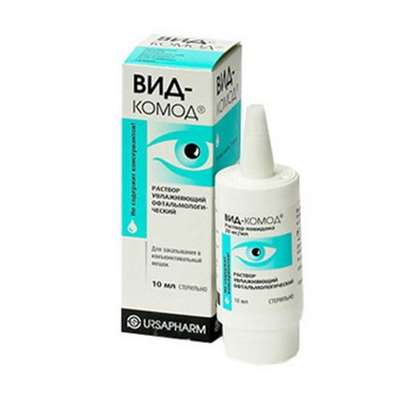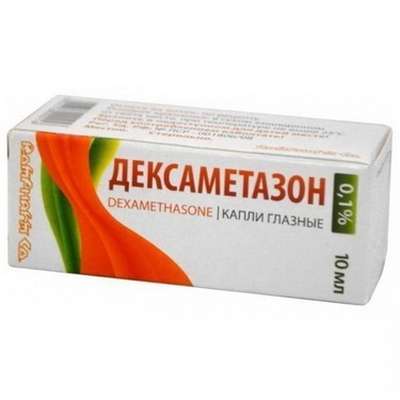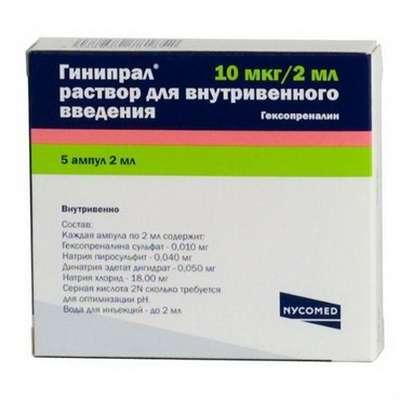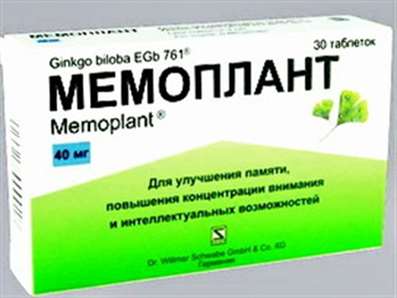Drug interactions
01 Dec 2016
The combined effect of medicines can be shown in the form of the phenomenon of a synergy or antagonism.
Synergy (Greek syn together; erg work) the unidirectional interaction of two or more medicines. Can be kinds of a synergy summation (additive effect) when at simultaneous use of drugs their effect is peer to the sum of effects of components of a combination (for example, introduction of non-narcotic analgetik), or potentiation when the effect of a combination exceeds the sum of effects of separate drugs (for example, aminazine exponentiates effect of drugs for a narcosis that allows to lower their doses). Besides, distinguish a straight line synergy when drugs affect the same substrate (hypoglycemic effect of insulin synthetic hypoglycemic agents, derivative sulfanylurea strengthen). An indirect or indirect synergy is shown when drugs have a different point of application (bronchial spasmolytics from group of β-2-adrenomimetik and M-holinoblokatorov). Full synergy defines a summation of all effects in a combination (inhalation and not inhalation anesthetics), an incomplete synergy represents a summation of one effect (for example, in case of use of aminazine and hypnagogues only the somnolent effect amplifies).
Antagonism (Greek anti against; agon fight) decrease or full elimination of effect of one medicine by another at their combined use. Distinguish antagonism physical (the adsorptive activity of sorbents in relation to toxins), chemical (interaction of acids and alkalis), functional (interaction of holimomimetik and holinoblokator).
Functional antagonism can be parted also on:
- straight line (pilocarpine gilrokhlorit the M-cholinomimetic, Atropini sulfas M-holinoblokator) when medicinal preparations influence the same structures and have multidirectional effect;
- indirect or indirect (pilocarpine a hydrochloride the M-cholinomimetic and Adrenalinum hydrochloricum adrenomimetics) when drugs influence various structures and have multidirectional effect;
- bilateral (a neodicoumarin a coagulum and fillohione anticoagulants of indirect action) when medicinal preparations depending on a dose reduce action at each other;
- unilateral antagonism (pilocarpine a hydrochloride the M-cholinomimetic and Atropini sulfas M-holinoblokator) when Atropinum eliminates all effects of pilocarpine, and pilocarpine not all effects of atropine.
In sports medicine in the recovery and preparatory periods administration of several medicines is possible. The sports doctor at the same time is obliged to know possible aspects of pharmacokinetic and pharmakodinamic interaction of medicines.
Change of the concentration of drug necessary for specific action on receptors in sensitive organs and tissues is result of pharmacokinetic interaction. So, need of reception of antihistaminic drugs together with anti-virus drug ribaviriny can lead to rising in a blood of concentration of antihistaminic agents (except an astemizol and terfenadin).
At combined use of medicinal preparations their mutual influence on an absorption in the digestive channel can be observed. It is established that the absorption of hydrophylic medicines occurs quicker if to wash down not 1/4 1/2 glasses, and one-two glasses of water. Please pay attention to Visoluten.
Important practical value has change of processes of an absorption of one medicinal preparations under the influence of others. So, antacids and a sorbent worsen absorption of many drugs.
Is important πΝ mediums that influences extent of ionization of medicines. It is known that in a stomach at acidic environment weak acids, and in alkaline medium of an intestine the weak bases are better soaked up.
Drugs with properties of antacids which athletes can accept at the developed heartburn (Natrii hydrocarbonas, a magnesium oxide, Almagelum, maalocs, renin) can reduce rate of passing of the ionized medicines through biological membranes. If at the same time the athlete for decrease of a headache accepts acetylsalicylic acid and at the same time at the beginning angina Sulfanilamidums, joint pains sodium diclofenac, a diarrhea Furazolidonum or nifurocsasid, a heart failure digoxin, their absorption can be slowed down considerably.
Antiacid medicines can reduce an absorption of semi-synthetic antibiotics of group of Penicillinum, drugs of group of Tetracyclinum. Reception of oral contraceptives by women of childbearing age reduces an absorption of drugs of B12 vitamin, increases concentration of Nitrazepamum. Drugs of salts of serious metals, it first of all belongs to iron preparations, reduce an absorption of Tetracyclinum, a doksitsiyugin, Metacyclinum; drugs of Zincum reduce absorption only of Tetracyclinum. It is impossible to wash down medicinal preparations of antibiotics with the liquids containing iron such as Baikal, in connection with a possibility of a complex formation and decrease of absorption.
Some medicines can damage an intestine mucosa and by that to slow down an absorption. Jonah Shchelochnozemelnykh of metals a calcium Sodium lactatum, gluconat, Glycerophosphatum, a magnesium sulfate, orotat can slow down an absorption, forming complexes with acetylsalicylic acid, Sulfanilamidums.
Other medicines can provide more fast entering of other medicines in a blood. Rising in a blood of concentration of the last can increase risk of implications of toxic effects. Reception of Nifedipinum with Chinidinum considerably increases concentration it in a blood, the risk of pro-arhythmic effect of Chinidinum increases.
Retardation of a motility of a stomach and intestine spasmolysants, M-holinoblokatorami promotes fuller absorption of Tetracyclinum and Digitoxinum.
Replacement of drug from places of linkng with proteins of plasma can increase concentration of its free fraction and pharmacological activity. At the same time untied drug quickly comes out plasma, comes to organs and tissues, is exposed to a biotransformation and the subsequent removal. Concentration of free fraction of the forced-out drug quickly comes back to a reference value. Clinically important this effect can be in case medicine possesses communication with protein for 80 90% and its clearance depends on communication with protein. Anticoagulants at introduction with Sulfanilamidums (both groups of medicines enter interaction with proteins of plasma), being bound to proteins, strengthen their action. Sometimes interaction with proteins turns on the cascade of biochemical and physiological reactions. The heparin activates lipoproteinlipase which in turn enlarges education from triglycerides of free fatty acids which can force out from communication with protein Propranololum, Lidocainum, Verapamilum, Digitoxinum, Phenytoinum.
Consider to increase effects of interaction of medicines, realization of several mechanisms is necessary.
Sodium Valproatum increases activity and toxicity of dipheninum as forces out it from places of linkng with an albumin of plasma and inhibits a metabolism.
Therefore, on a possibility of their inefficiency, or on the contrary, on rising of toxicity can affect concentration of medicines hypo - or an overhydratation. At the polyuria caused by lithium drugs, diuretic agents can render paradoxical effect. Reception of diuretic of Spironolactonum with asparkamy, Pananginum, ritmokor and other drugs increases risk of development of hyperpotassemia and danger of disturbances of a cordial rhythm.
Pharmacokinetic interaction between drugs can happen on a metabolic rate.
Induction of enzymes of a liver drugs accelerates a metabolism, reduces therapeutic effect. Peroral contraceptive steroids in the presence of the inductor of enzymes, in particular dipheninum that can lead to unplanned pregnancy. Continuous consumption of alcohol can reduce tolerance to medicines thanks to induction of enzymes. Inhibitors the mikrosomalnykh of enzymes strengthen action of a series of drugs and promote emergence of side effects. Erythromycin suppresses activity of R-450 cytochrome, braking a metabolism of Theophyllinum, warfarin, Karbamazepinum, Methylprednisolonum.
Simultaneous parenteral administration of Thiaminum and pyridoxine isn't recommended and not only in one syringe as the pyridoxine slows down transformation Thiamini chloridum in fosforilirovanny biologically active form, allergenic effect of thiamine in parallel amplifies.
The size of a renal clearance of medicines can change in the course of their interaction in kidneys. At alkaline reaction of urine the clearance of acetylsalicylic acid, Sulfanilamidums is enlarged. Ftorkhinolon can lower the general clearance of H2-antihistamine drugs.
There are data that medicines with various mechanism of action can have identical character of pharmakodinamic and different pharmacokinetic interaction.
Combined interaction
At the same time often interaction of medicines meets various mechanism of action. The positive effect (summation) is reached in case of rational application of medicines (the α-2-adrenostimulyator the clonidine oppressing activity of neurons of the center and an efferent impulsation on sympathetic nervous system to heart and vessels can be combined with the hydrolysine showing miotropny action and also with diuretic means with gidrokhlortiazid).
Benefits of the combined application of medicines:
1. Essential decrease in risk of emergence of the collateral reactions having nature; now low-dose therapy is proved.
2. Summation and synergysm of antigipertenzivny effect that allows to apply medicines in smaller effective doses.
3. An opportunity to exert corrective impact on various pathogenetic links of forming and progressing of arterial hypertension, potentiation of protection of target organs for elimination of their structural and functional violations taking place in case of arterial hypertension.
Let's give an example of the most rational combinations:
- tiazidny diuretic APF inhibitor;
- tiazidny diuretic + β-adrenoblokator;
- tiazidny diuretic + antagonist of receptors of angiotensin II;
- tiazidny diuretic + antagonist of calcium;
- antagonist of calcium of a dihydropyridinic row + β-adrenoblokator;
- antagonist of calcium + APF inhibitor;
- antagonist of calcium + antagonist of receptors of angiotensin II (2);
- β-adrenoblokator + α-adrenoblokator, etc.
In case of inefficiency of two-three medicines appointment is carried out by the rule ABCD (And APF inhibitor; In a β-adrenoblokator; With the antagonist of calcium; D diuretic).
For tranquilizers, including day (to gidazepa, etc.), increase in the depriving of bonuses influence on TsNS in case of alcohol intake, hypnotic drugs, neuroleptics, narcotic analgetik is characteristic.
Efficiency of immunomodulators (γπξοπθνΰηθν, etc.) is reduced by immunodepressants.
Thus, combined use of medicines in sports medicine should be considered from the point of view of possible pharmaceutical and pharmacological interaction.
Interaction of drugs
In case of simultaneous entering of drugs perhaps both the favorable, and their adverse interaction having the pharmacokinetic and/or pharmakodinamic nature.
Simultaneous application in case of Parkinson's disease gives positive effect of interaction
Karbidopa inhibits transformation of levodopa into dopamine, however only in peripheral fabrics since the karbidopa doesn't get through hematoencephalic barrier. As a result the levodopa after oral administration turns into dopamine only after receipt in a brain the place of desirable pharmacological effect. In this example of karbidop eliminates or sharply reduces side system effects which would arise owing to formation of dopamine from levodopa on the periphery.
Hypotension at the patients receiving diuretics as remedy for hypertensia can be limited to simultaneous entering of NPVS
Function of kidneys at some patients receiving diuretics for treatment of hypertensia can be broken as a result of simultaneous entering of the nonsteroid resolvents (NPVS) blocking activity of kidneys. Thereby synthesis of prostaglandins in kidneys decreases. As prostaglandins promote maintenance of a kidney blood-groove, suppression of their products often leads to decrease in elimination of products of metabolism, sodium and water kidneys. Increase in amount of the circulating blood and increase in load of heart, i.e. emergence of the effects counteracting effect of diuretics is a consequence of this interaction.
NPVS break process of fibrillation at the patients receiving the oral anticurtailing medicines
The effect of interaction of anticoagulants and NPVS determine two mechanisms:
- suppression of function of a tsiklooksigenaza under the influence of NPVS;
- the competitive replacement of oral anticoagulants from their communication with proteins of plasma performed by NPVS.
As a result the anticurtailing effect mediated by antagonism in relation to vitamin K amplifies owing to an ingibition of activity of platelets and suppression of their aggregation as folding mechanism component. With respect thereto it is reasonable to the patients accepting oral anticoagulants to use acetaminophen instead of NPVS.
Interaction of drugs with food can affect their efficiency
The iron which is present at some medicines is capable to create complexes with various chemicals. So, the iron-levodopa in case of drives formation of a complex to decrease in absorption of levodopa and reduction of receipt of medicine in a brain. This interaction reduces efficiency of a levodopa in treatment of a disease of Parkinson. Other classical example of interaction of medicine with food is a formation of a complex of tetratsiklin with Sa2+ containing in milk. Absorption of antibiotic decreases, its antimicrobic activity respectively falls. Unlike these two examples intake of blockers of calcic channels with the high level of presystem elimination together with juice of grapefruit increases the fraction of the accepted dose arriving in a peripheral blood-groove. It strengthens pharmacological effect. The mechanism consists in an ingibition juice of grapefruit of the CYP3A4 isoform of R-450 cytochrome metabolizing the medicine taken inside that can cause hypotension and other undesirable effects owing to high concentration of blockers of calcic channels in plasma.

 Cart
Cart





